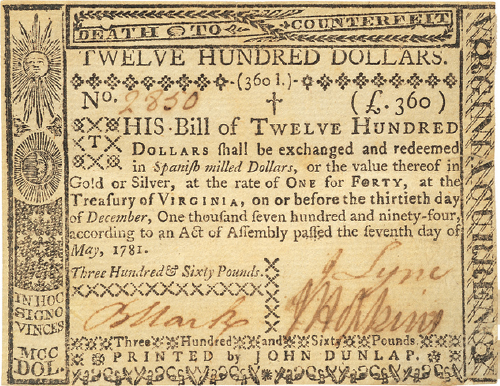America’s History: Printed Page 188
America: A Concise History: Printed Page 166
America’s History: Value Edition: Printed Page 164
Financial Crisis

Such defiance exposed the weakness of Patriot governments. Most states were afraid to raise taxes, so officials issued bonds to secure gold or silver from wealthy individuals. When those funds ran out, individual states financed the war by issuing so much paper money — some $260 million all told — that it lost worth, and most people refused to accept it at face value. In North Carolina, even tax collectors eventually rejected the state’s currency.
The finances of the Continental Congress collapsed, too, despite the efforts of Philadelphia merchant Robert Morris, the government’s chief treasury official. Because the Congress lacked the authority to impose taxes, Morris relied on funds requisitioned from the states, but the states paid late or not at all. So Morris secured loans from France and Holland and sold Continental loan certificates to some thirteen thousand firms and individuals. All the while, the Congress was issuing paper money — some $200 million between 1776 and 1779 — which, like state currencies, quickly fell in value. In 1778, a family needed $7 in Continental bills to buy goods worth $1 in gold or silver. As the exchange rate deteriorated — to 42 to 1 in 1779, 100 to 1 in 1780, and 146 to 1 in 1781 — it sparked social upheaval. In Boston, a mob of women accosted merchant Thomas Boyleston, “seazd him by his Neck,” and forced him to sell his wares at traditional prices. In rural Ulster County, New York, women told the committee of safety to lower food prices or “their husbands and sons shall fight no more.” As morale crumbled, Patriot leaders feared the rebellion would collapse.